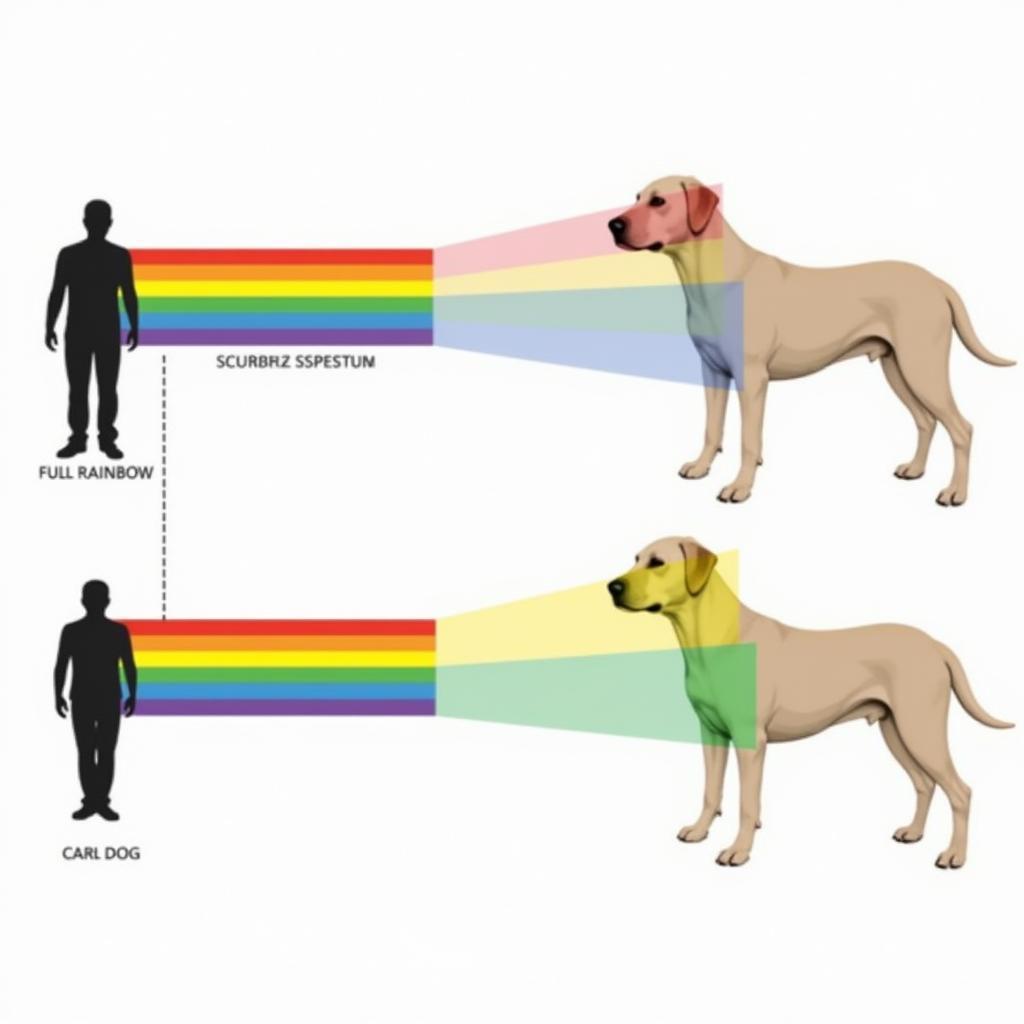Have you ever found yourself watching Bluey with your little ones and wondered, “Can dogs even see these vibrant colors?” It’s a common question that sparks curiosity about how our furry friends perceive the world, especially when it comes to the colorful world of Bluey. Let’s delve into the science of dog vision and explore whether Bluey is truly made with a dog’s perspective in mind.
Debunking the Myth of Black and White Vision in Dogs
For a long time, it was widely believed that dogs see the world in black and white. However, scientific research has debunked this myth, revealing a more nuanced understanding of canine vision. Dogs do see color, but their color perception differs significantly from that of humans.
Understanding the Canine Color Spectrum
While humans possess trichromatic vision, meaning we perceive colors through three types of color receptors (cones) in our eyes – red, green, and blue – dogs have dichromatic vision. This means they have only two types of cones that are sensitive to blue and yellow wavelengths.
 Dog Color Spectrum
Dog Color Spectrum
Imagine a color palette with muted shades of blue, yellow, and gray. That’s a simplified representation of how dogs see the world. Red, orange, and green appear as variations of brownish-gray to them.
So, Can Dogs See Bluey’s Colors?
The short answer is: partially. While dogs can see the blue and yellow hues prevalent in Bluey, the reds and oranges might appear less vibrant and closer to shades of brown or gray.
Why Does it Matter?
You might be wondering, if dogs can’t see the full spectrum of colors, why does it matter how Bluey is designed? There are a few reasons:
- Engagement: While color perception is a factor, dogs are also drawn to movement, patterns, and brightness contrasts. Bluey incorporates plenty of these elements, making it visually stimulating for canine viewers.
- Emotional Response: Studies have shown that dogs can associate specific colors with emotions. Blue and yellow, the colors dogs see best, are often linked to calmness and playfulness, respectively, which aligns with the show’s overall tone.
- Human Enjoyment: Ultimately, Bluey is created for a human audience. The vibrant colors enhance the viewing experience for children and adults alike.
The Bigger Picture: Beyond Color
While the question of dog vision is intriguing, it’s important to remember that Bluey’s appeal extends far beyond its visual aspects. The show’s heartfelt storylines, relatable characters, and themes of family, friendship, and imagination resonate with viewers of all ages and species.
Conclusion
So, Is Bluey Made In Dog Vision Colors? Not entirely. Dogs wouldn’t perceive the same vivid colors that humans do. However, the show incorporates elements that appeal to a dog’s visual senses, such as brightness contrasts and movement. Ultimately, Bluey’s success lies in its universal themes and engaging storytelling, making it a delightful watch for both humans and their furry companions.

